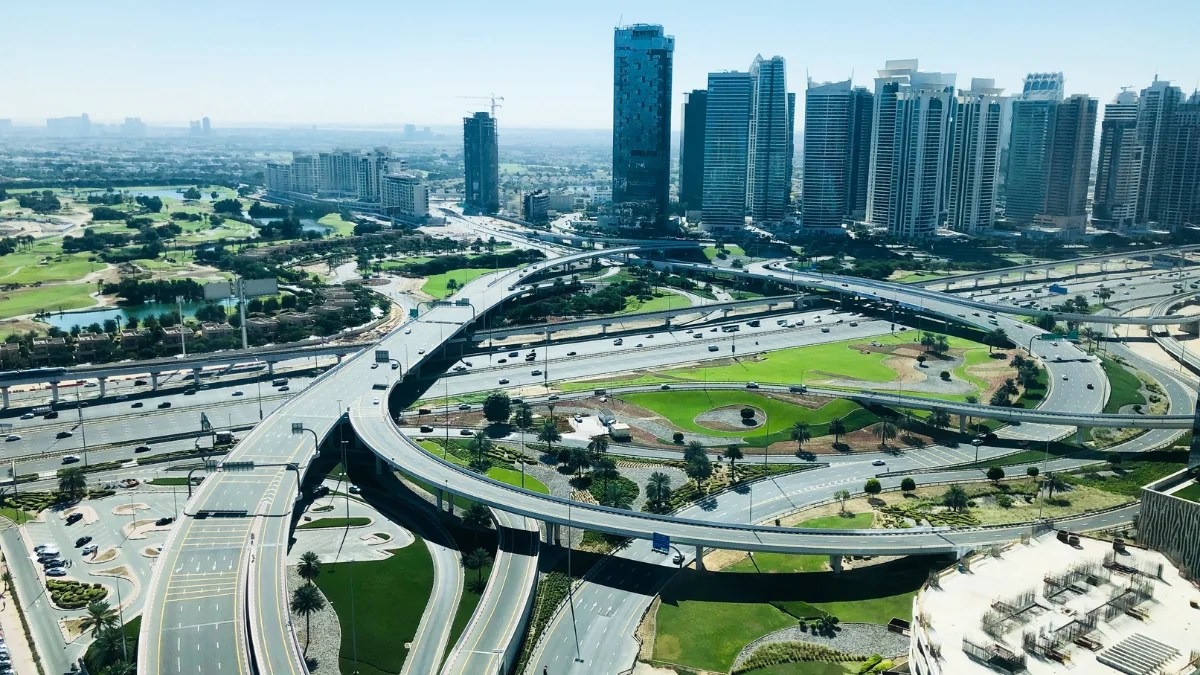Dubai is rapidly expanding its road infrastructure with a major focus on internal road projects that span 103 kilometres across eight key residential and industrial areas. The Roads and Transport Authority (RTA) has spearheaded this ambitious development to improve traffic flow, reduce congestion, and enhance safety for more than 400,000 residents and businesses. This strategic initiative reflects Dubai’s commitment to sustainable urban growth and showcases its vision for a world-class transport network.
Overview of Completed and Ongoing Projects
Two significant projects have been completed—one in Al Khawaneej 2 (Tolerance District) and the other in Jebel Ali Industrial Area 1. The Al Khawaneej 2 project delivered six kilometres of new roads, upgraded intersections, installed 765 parking spaces, set up 178 lighting poles, and added a cycling track to encourage environmentally friendly travel options. Jebel Ali Industrial Area 1 saw a 27-kilometre upgrade, including conversion of a critical four-way junction to a signalised intersection, seven new roundabouts, and the installation of 42 kilometres of advanced street lighting. These developments dramatically improve traffic capacity and safety, particularly for heavy vehicles, which reduces bottlenecks in this busy industrial zone.
Currently, six other districts are undergoing major road construction projects. Nad Al Sheba, Al Awir 1, Al Warqa’a, and Wadi Al Amardi are seeing extensive infrastructural upgrades that will substantially shorten commuting times and ease access within residential neighborhoods.
Key Residential Area Upgrades
- Al Warqa’a: This district features a new access road linking directly to Sheikh Mohammed bin Zayed Road, cutting trip distances by nearly 80% from 5.7 km to 1.5 km, and slashing travel time from 20 minutes to just 3.5 minutes. The addition is expected to increase road capacity by approximately 30%.
- Al Awir 1: RTA is building a 7.5-kilometre dual carriageway with an additional four-kilometre lane connecting Emirates Road. This will double the road capacity from 1,500 to 3,000 vehicles per hour and improve safety with new intersections and roundabouts, targeted for completion in the second quarter of 2026.
- Nad Al Sheba: Phase one of a 32-kilometre road network with 15 kilometres of pedestrian and cycling paths is near completion. Further phases will finalize additional road sections by early 2027, enhancing connectivity and encouraging healthier modes of transport.
- Wadi Al Amardi: Construction includes a 15-kilometre internal road network with 405 lighting poles and parking facilities for 1,000 vehicles. Residents will benefit from an 80% reduction in travel distances once fully operational, with expected project completion by Q3 2026.
Addressing Urban Growth and Mobility Needs
These projects are critical responses to Dubai’s rapid urbanization and population growth. By expanding internal roads, the RTA is alleviating traffic pressure in neighborhoods and improving connections to major highways like Sheikh Mohammed bin Rashid Road and Emirates Road. The improvements enhance accessibility to schools, mosques, parks, and commercial centers, promoting safer daily commutes. Furthermore, the inclusion of pedestrian pathways and cycling tracks fosters sustainable and active transport options supporting Dubai’s green mobility goals.
Economic and Community Benefits
Besides benefits for commuters, these road networks help businesses, especially logistics and manufacturing sectors in industrial locations such as Jebel Ali, by enabling faster goods movement and reducing transit delays. Employers and workers alike will enjoy shorter travel times and improved accessibility.
Community benefits include improved street lighting, safer road crossings, and newly constructed parking areas, all enhancing the quality of life and public safety.
Strategic Vision and Future Developments
Dubai’s long-term infrastructure framework, aligned with the Dubai Urban Master Plan 2040 and RTA’s Strategic Plan 2023-2030, prioritizes smart, sustainable, and efficient transport systems. The ongoing internal road projects are among 21 initiatives covering 12 neighborhoods, with an estimated total of 634 km of internal roads planned through 2029 at a cost of AED 3.7 billion.
Upon completion, this extensive network will not only support increasing traffic volumes but also integrate advanced smart systems for traffic management and safety monitoring.
Conclusion
Dubai’s internal road projects represent a milestone in the city’s pursuit of world-class mobility infrastructure. By boosting connectivity, easing congestion, promoting sustainability, and enhancing safety, these projects play a pivotal role in supporting the city’s growth, economy, and residents’ daily life.
As the RTA pushes forward with ongoing and future expansions, Dubai is transforming its transport landscape, ensuring residents and businesses stay connected efficiently and comfortably.
